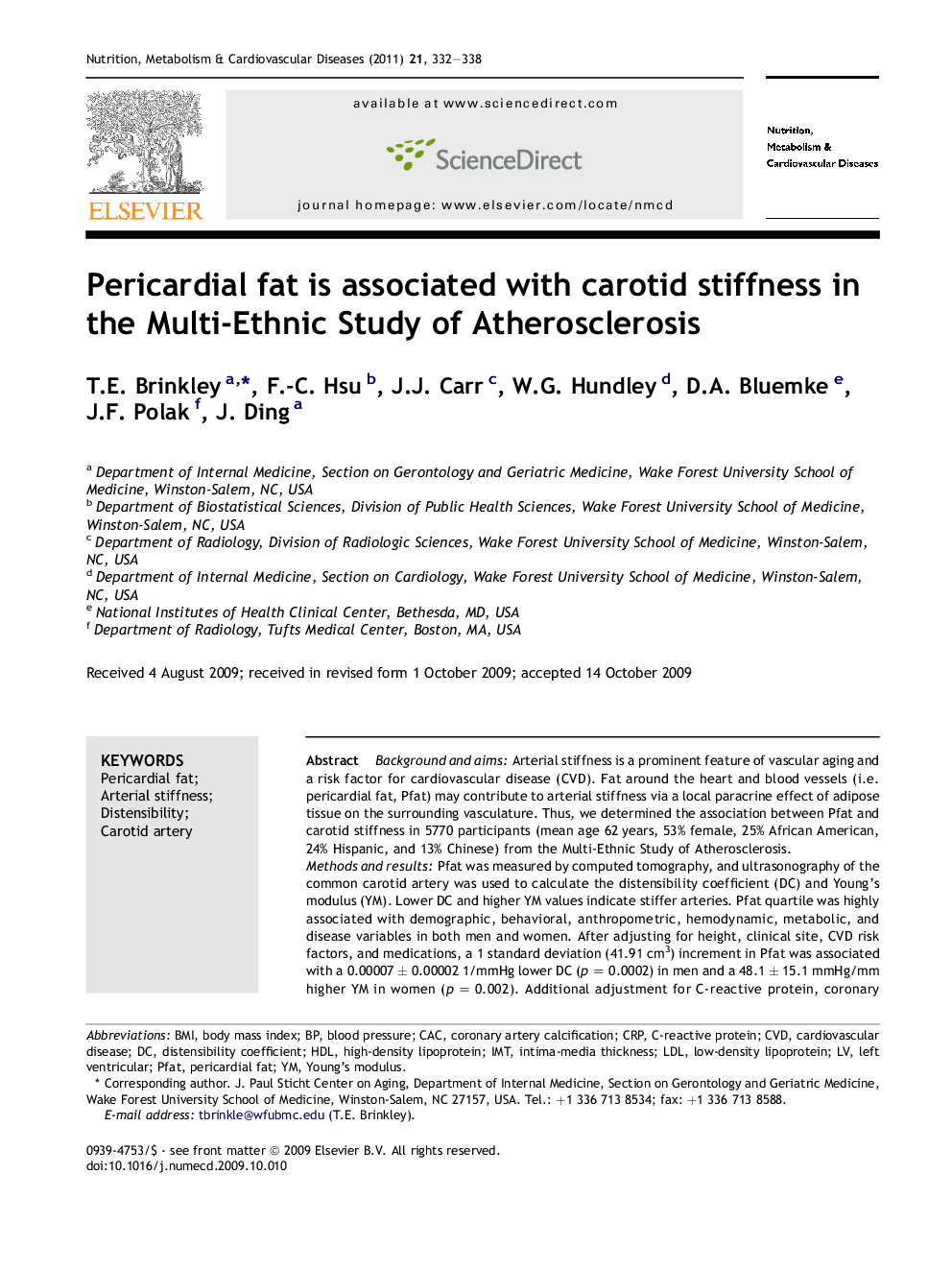| Article ID | Journal | Published Year | Pages | File Type |
|---|---|---|---|---|
| 3002013 | Nutrition, Metabolism and Cardiovascular Diseases | 2011 | 7 Pages |
Background and aimsArterial stiffness is a prominent feature of vascular aging and a risk factor for cardiovascular disease (CVD). Fat around the heart and blood vessels (i.e. pericardial fat, Pfat) may contribute to arterial stiffness via a local paracrine effect of adipose tissue on the surrounding vasculature. Thus, we determined the association between Pfat and carotid stiffness in 5770 participants (mean age 62 years, 53% female, 25% African American, 24% Hispanic, and 13% Chinese) from the Multi-Ethnic Study of Atherosclerosis.Methods and resultsPfat was measured by computed tomography, and ultrasonography of the common carotid artery was used to calculate the distensibility coefficient (DC) and Young's modulus (YM). Lower DC and higher YM values indicate stiffer arteries. Pfat quartile was highly associated with demographic, behavioral, anthropometric, hemodynamic, metabolic, and disease variables in both men and women. After adjusting for height, clinical site, CVD risk factors, and medications, a 1 standard deviation (41.91 cm3) increment in Pfat was associated with a 0.00007 ± 0.00002 1/mmHg lower DC (p = 0.0002) in men and a 48.1 ± 15.1 mmHg/mm higher YM in women (p = 0.002). Additional adjustment for C-reactive protein, coronary artery calcification, and carotid intima-media thickness had only modest effects. More importantly, adjusting for body mass index and waist circumference did not significantly change the overall results.ConclusionHigher Pfat is associated with higher carotid stiffness, independent of traditional CVD risk factors and obesity.
